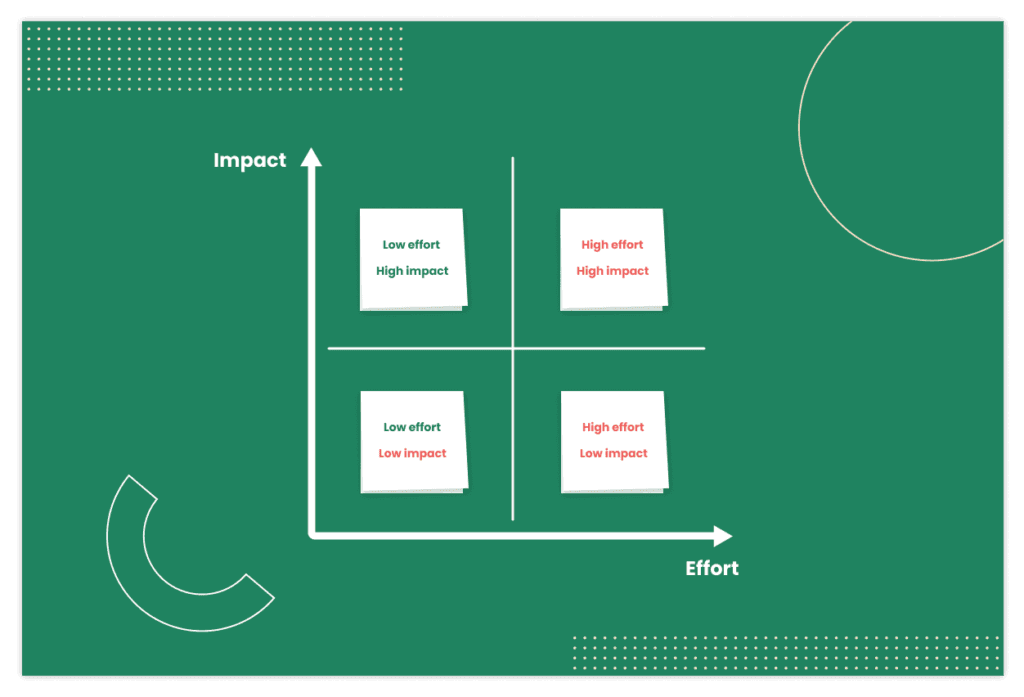Prioritisation = Profit: How To Plan Product Changes To Drive More Sales
UI/UX Design
User Research
One of the quickest lessons anyone new to software design learns is that “perfect” isn’t ever an attainable standard. Digital products involve teams of people with specialist skills, users who have specific needs and technology that is always changing. The second lesson, then, is that it’s okay to let go of perfect. Instead, you should recognise that digital projects are a matter of prioritisation – with the most important features and changes being the ones that will drive the most value.

With limited time and resources, your product will only launch with some of its intended features – which is why all digital products regularly update post-release to continue to grow and satisfy user needs. While there are ways to limit problems pre-release, difficulties are inevitable. No software team has the time and resources to spot every potential issue and build a fix. Instead, teams must use a priority system to focus on the things that matter most.
Why assign priority to product updates
Here at KOMODO, we work on Refinement projects that take existing products and enhance them to drive better commercial success. That often means updating functionality, adding new features and improving the overall user experience. We do this whether we’ve built the product ourselves or it’s one you’ve brought to us from elsewhere, because we know that regardless of its launch state, supporting a product post-release is the best way to drive success.
How to prioritise product features: The concept of impact vs. effort
To support a product through updates, you need a way to prioritise your resources based on impact vs effort. If your development team spends days on a feature that receives poor user uptake, you’ve wasted money and potentially lost users. To identify the potential impact of changes, we’ll research user needs and behaviours, establishing detailed personas and user journeys. From here, we’ll be able to identify the key features and UX elements that will make the biggest difference to your product’s conversions.

Creating an impact vs effort matrix helps visualise and prioritise your planned changes. Map your features/updates/fixes out based on how much effort the team will have to put in versus the impact they’ll have on user satisfaction and conversion. This matrix can’t be used in isolation because it skews teams towards quick wins (low effort, high impact). Instead, your product’s journey needs to plan for a variety of changes, some of which will be higher effort than others. To prioritise these efforts more effectively, we use the MoSCow method.
Using MoSCow for your product roadmap
MoSCow prioritisation is a popular Agile technique for sorting priorities. It is a fairly simple idea at its core, revolving around four key areas:
Must have: a requirement that must be satisfied to consider the product a success. These are the ‘core’ features that form your MVP.
Should have: the high-priority features/fixes that will help users the most but aren’t ‘musts’.
Could have: potential additions and changes that will improve overall UX.
Won’t have: requirements that won’t be addressed in your current project phase but should be recorded for future use.

The best way to use MoSCow is during each Sprint cycle of your product. Initially, the ‘must-have’ features/changes/fixes are the most important and will represent around 60% of your team’s efforts. Each cycle should involve reprioritising your MoSCow map with elements from the product backlog.
After each sprint is released into 'the wild’, you’ll see new feature requests and bug-fix tickets become more common. You can add these items to your product backlog and then use MoSCow at the start of each sprint to assign importance to them.
Don’t overburden the backlog
If you’re being honest, would you get excited about working on changes that had been exiled to the product backlog from the ‘high effort’ part of our impact/effort matrix? Human nature prefers the lower effort, higher reward tasks – but a digital product will often need those higher-effort, less rewarding changes to stay competitive. (Think bug fixes and compatibility updates.) You must continually readdress your product backlog by remapping suggested features or fixes based on up-to-date insight. What was originally high effort, low impact in your last sprint might now be high effort, high reward. Without a priority system in place, you may simply ignore that feature or change and lose out on sales. By concentrating your team’s efforts on the fixes and changes that will have the most impact for the least effort, you decrease your resource requirements but improve overall end-user satisfaction. This, in turn, drives more profit back to your business.

Sign up to our newsletter
Be the first to hear about our events, industry insights and what’s going on at Komodo. We promise we’ll respect your inbox and only send you stuff we’d actually read ourselves.







